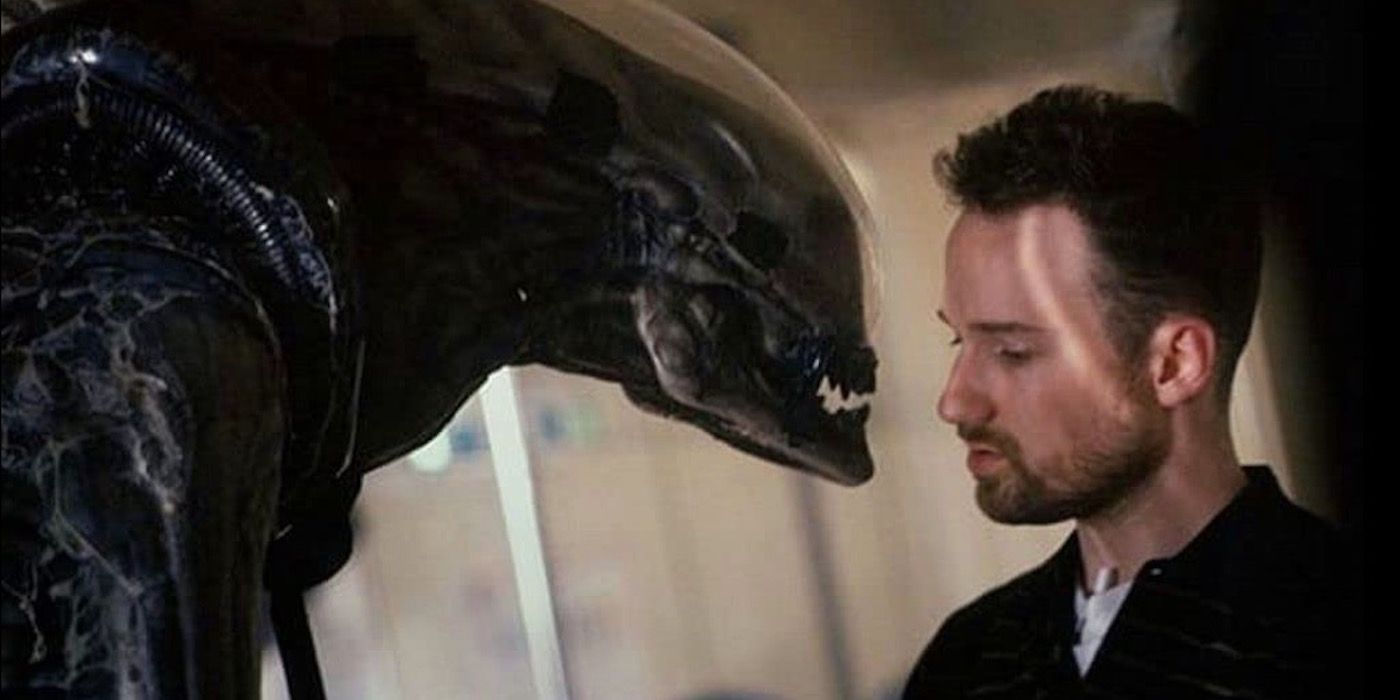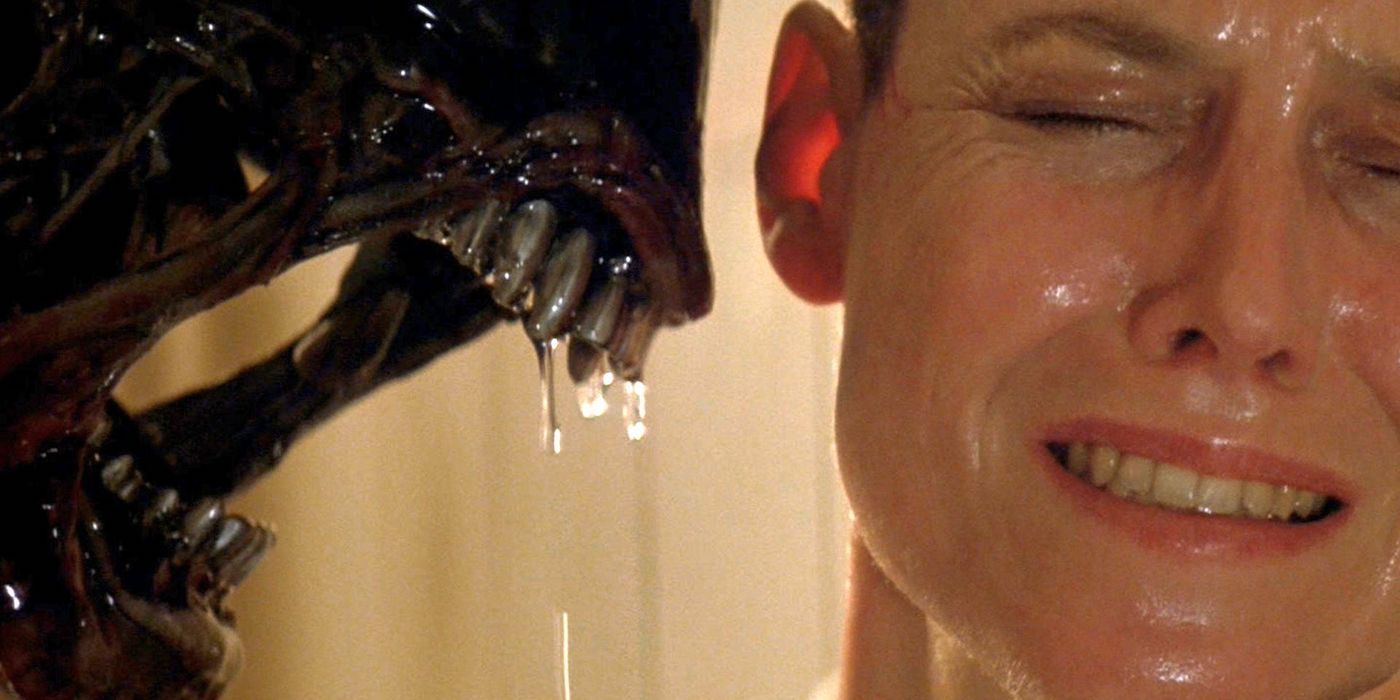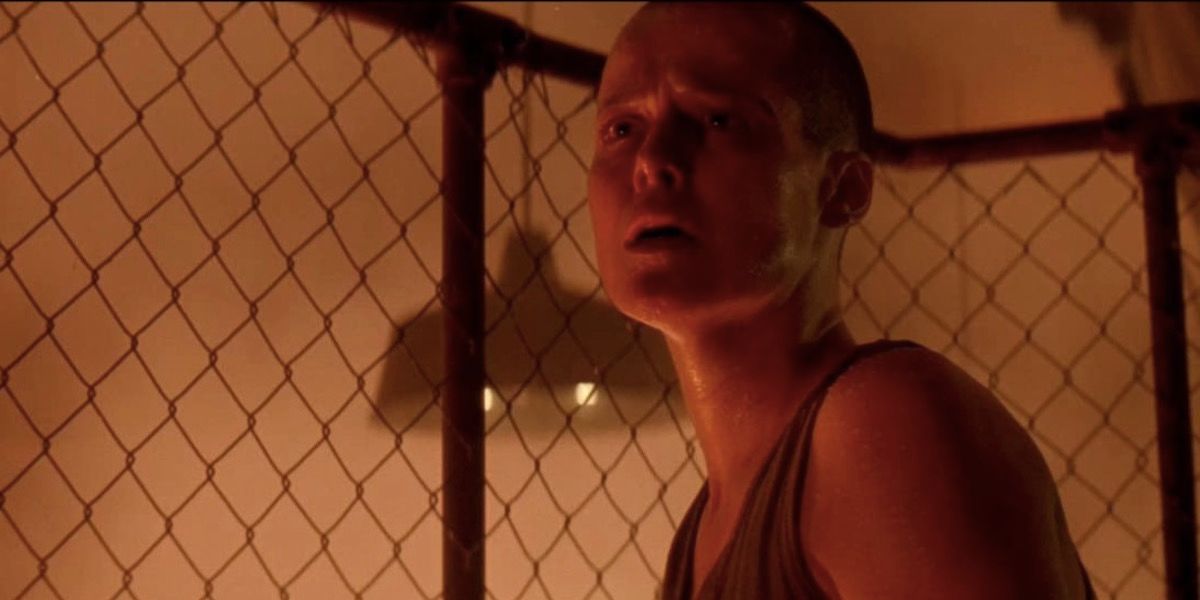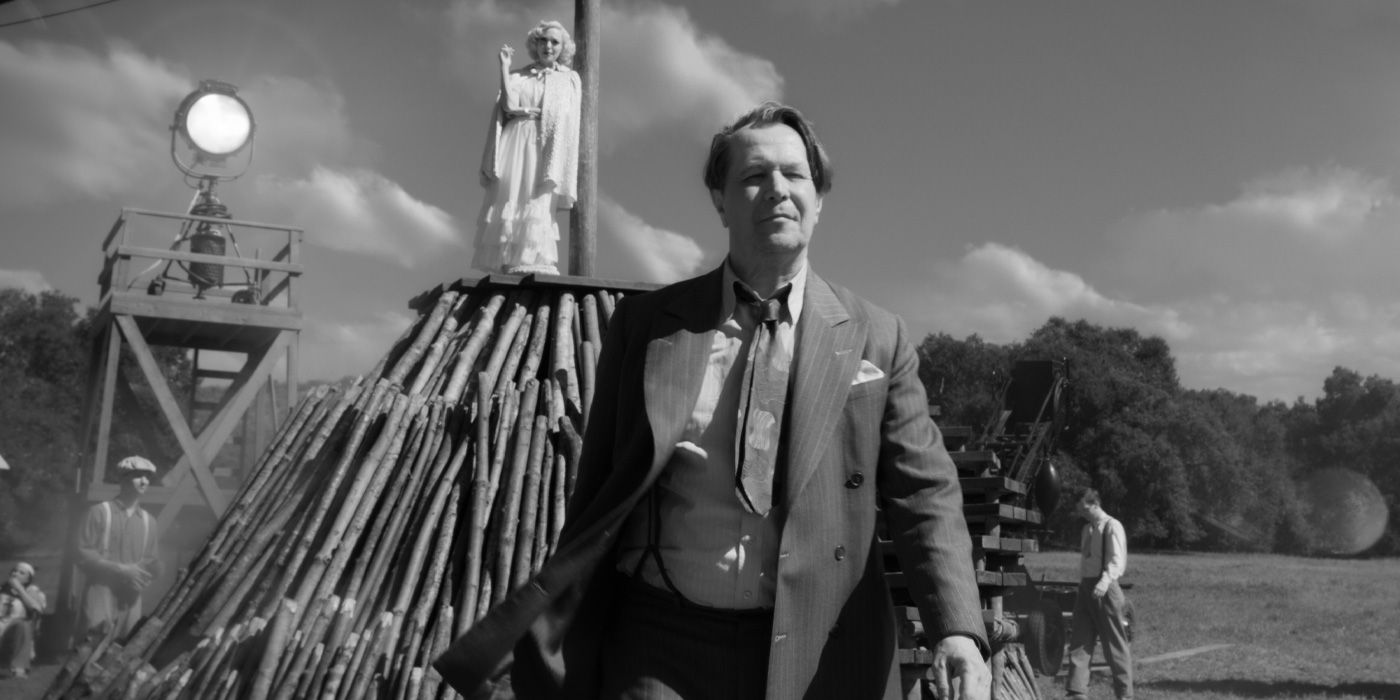With Prey, the fifth film in the Predator franchise, and a prequel to the first four films, coming out this summer, and in honor of Alien 3's 25th anniversary, let's take a look back at David Fincher debut film.
The biggest difference between the xenomorph of Alien 3 and its acid-tongued distant cousins in Alien and Aliens is that it bursts from its host fully-formed. There's no baby stage for the beast on Fiorina 161; it simply emerges from the belly of poor Spike the dog, gnawing and gnashing and spitting venom, and the only thing left to do is grow larger. This, incidentally, is the best possible metaphor for David Fincher, the stubborn genius pervert-auteur who made his feature debut with Alien 3 and has seemingly tried his darndest to forget the experience ever since. Few can blame him. Production on the horror sci-fi sequel was a hot sloppy mess before Fincher came aboard, so his actual time on set was a whirlwind of tension, script changes, and studio intervention. (Which his own well-documented idiosyncrasies absolutely did not help, but we'll get to that.) But man, Alien 3 remains fascinating — as a failure, as a first attempt, and in the way the David Fincher dropping Mank on Netflix nearly three decades later seems to somehow be the exact same technician and a filmmaker changed by Alien 3 forever.
For that to make sense, you gotta' understand a few facts: Fincher was barely 28 when he landed Alien 3. To say he came out of nowhere, though, would be incorrect. After a stint at George Lucas' VFX house Industrial Light & Magic, Fincher became That Dude in the world of commercials and music videos, co-founding production company Propaganda Films in 1986 and banking gigs with Madonna, Aerosmith, Michael Jackson, and George Michael (to name a few). But it also would be misleading to say he was an obvious choice. Ridley Scott and James Cameron were, at least, both hired to helm an Alien movie on the basis of impressive prior features. (The Duellists and The Terminator, respectively.) So maybe the most vital thing to know is that Fincher still walked on to the set of Alien 3 swinging a pair of titanium balls that could knock the Nostromo out of orbit. Like the monstrous extraterrestrial he was overseeing on set, David Fincher—for better or worse—arrived raw but fully formed.
Perhaps the most illuminating thing ever written about David Fincher is Empire's dispatch from the set of Alien 3. "He likes to make sure he's got things right, which is why he prefers about 20 takes for every scene instead of six or seven. It might get a bit repetitive," publicist Geoff Freeman warned before the reporter reached production. Moments later, Sigourney Weaver ensured the reporter she'd have time to speak after a quick shot. "She's gotta be joking," remarked a nearby stuntman. "See if you can find a chair to sit on. Or a bed."
Empire proceeded to wander around set as the 28-year-old David Fincher made franchise star Sigourney Weaver—Sigourney freaking Weaver!—scramble through a pipe 24 times.
"We are now on take 20," Garth Pearce wrote, "the morning has all but disappeared, and Weaver genuinely looks wrecked. No make-up required this time. I honestly can't tell the difference between take 24, the one that's accepted with a bark of, 'Check the gate', and all the others I've witnessed. It looks the same as the first."
There are...dozens of angles we can look at this, in hindsight, dozens of ways to interpret which artists history forgives for certain quirks, not to mention who is allowed to fail spectacularly and still stay on the tracks. For the record, Weaver had no hard feelings—"He saw Ripley as very vulnerable – her against everything and everyone. And I liked that," she says in the same report. The general sense you get is, among the delays and rewrites and endless takes, people bought into Fincher's vision for Alien 3. And there was, at one point, a vision. (One that got Fincher booted from the project a few times before it finally finished.) Here's what he said in 2008:
"My notion was that the third movie would be Ripley's acceptance of the notion of sacrifice. She'd had the Me Decade of the first movie. She'd come from the periphery of the story. Anybody could be the commander as long as they stuck to their guns and had a moral compass. And then the second movie she found a maternal instinct. And then I wanted the third one to be that she realizes that it's not about her generation. It's really about the future. The notion was to put the monster among the wretched. She was going to galvanize the wretched to self-sacrifice. Giving up their lives to save people who had banished them and should have been outside their scope of interest and that they would find some value in dying for the right reasons."
The finished product is...not quite that. Despite being inarguably the best Alien film to feature a guy falling into a giant fan and exploding, Alien 3 is an obvious piece-together job. An earlier version of the story stranded Ripley on a monastery planet populated by monks, and the arrival of the xenomorph would read, to them, as a test from the literal devil. The reworked version swapped the monastery for a prison planet, but for murky reasons kept the idea that this assembly of violent criminals are also vaguely religious. There is a heavy undercurrent of sacrifice—Ripley spends much of the third act begging people to just let her die–but it's buried under a neverending series of tension-free chase scenes between criminals you can't really root for and some shoddy xeno-CGI. (Necessary in no small part because Fincher's idea to throw prosthetics on a dog turned out exactly as hilarious as that sounds.)
But man, Fincher's eye is still in there, somewhere. Put the film on mute and it's an effectively grimy horrorshow lit like the aftermath of a landfill colliding with the sun. The golden glare itself feels dirty. Alien 3 is what David Fincher looks like boxed in on all sides. The lesson, according to the filmmaker himself in 2009, was this:
"I learned on [Alien 3] movie that nobody really knows, so therefore no one has to care, so it's always going to be your fault. I'd always thought, 'Well, surely you don't want to have the Twentieth Century Fox logo over a shitty movie.' And they were like, 'Well, as long as it opens.' So I learned then just to be a belligerent asshole, which was really: "You have to get what you need to get out of it." You have to fight for things you believe in, and you have to be smart about how you position it so that you don't just become white noise."
After a three-year, Grammy-winning return to music videos, Fincher was drawn back to film by Andrew Kevin Walker's script for Seven...but not the script studios wanted to make. Walker's story had been pounded into shape over the course of about 15 drafts into something digestible, landing on a version that nixed the iconic head-in-a-box finale for a more cookie-cutter climax. By decree of the Hollywood gods, Fincher somehow ended up with an earlier draft—one that included the box finale—and finagled a way to get that riskier vision made. He later recounted:
"I went and met with Mike De Luca, who was ostensibly at the time running New Line, and I said that I really liked the first draft, not the 13th draft. And he said, "Me too." So I asked what he was going to do, and I was laying out what I wanted to do on it. And he said, "Close the door." And then he said, "If we develop this and get into a dialogue about changes that could possibly be made to this material, there's no way that we could make this version of it, because I'll have 15 people looking over my shoulder who are going to be reading these pages as they come in. But if you say that you'll make this movie, starting in six weeks, we can make this version of the movie." So I said, "OK, let's go do it. Put the head in a box." And that's how the movie got made."
It's impossible to quantify how important it is to the shape of Fincher's filmography that Seven, a movie made on his terms, was the real breakthrough. Fincher has only directed nine feature films in the 25 years since Seven, and his list of scrapped projects is long enough to fill an entire article. The closest he's come again to "franchise" filmmaking is 2011's The Girl with the Dragon Tattoo, but good lord, that's arguably the most viscerally disturbing film in a career made up of notably disturbing films. Fincher has crafted a near-peerless filmography based on a blend of perfectionism, collaboration, and bullishness, and every success drives another nail into the 110% guarantee that what happened on Alien 3 will never, ever happen to David Fincher again. But the films come further and further apart these days—as the landscape shifts drastically toward studio-controlled tentpoles.
Which rounds us right back to Netflix, where Fincher is no stranger. He had a hand in casually changing TV forever with the first two episodes of House of Cards, developed the animated anthology Love, Death & Robots with Tim Miller, and developed/directed/EP'd the crime drama, Mindhunter. But Mank, a classic black-and-white Hollywood tale about troubled Citizen Kane co-writer Herman Mankiewicz (played by Gary Oldman), is Fincher's first feature for the streaming service, as well as his first project under a recently-revealed exclusive four-year deal. "I’m here to deliver [Netflix] ‘content’ — whatever it means— likely to bring them spectators, in my small sphere of influence," he told French magazine Premiere in November.
That's a bit of dry humor, of course, but it's still fascinating to compare it to the way Fincher recently described his experience on Alien 3 as being “a hired gun to make a library title for a multinational, vertically integrated media conglomerate.” The biggest difference—besides, you know, 30 years—is total freedom. If Alien 3 was a box, Netflix is simply an umbrella with limitless space. The streamer has gotten into the big-money business of getting out of creatives' way, co-financing Martin Scorsese's uber-expensive epic The Irishman and poaching creators like Ryan Murphy and Shonda Rhimes with massive do-what-you-want deals. It's wild to say a two-time Oscar nominee with multiple decades to his career is getting a new start, but Netflix, in many ways, seems to symbolize something Fincher has been chasing his entire career. He said himself, in Premiere:
“Now [because] I signed this Netflix deal it’s also because I’d like to work like Picasso painted, to try very different things, to try to break the shape or change the operating mode. I like the idea of having a body of work. And yes, I admit that it feels strange, after forty years in this profession, to only have ten films under my belt. Well, eleven, but ten that I can say are mine. Yes, objectively, it is a pretty terrifying observation.”
It's also no surprise that any massively successful person looking back on their works would eventually bump up against Citizen Kane, the story of a man, Charles Foster Kane (Orson Welles), who amassed more wealth and power than God then died alone in a sprawling castle, surrounded only by artifacts and echoes. I wouldn't quite call Alien 3 Fincher's filmmaking "Rosebud"—that symbol of lost innocence that propels a man to spend his life shoveling into a hole that can't be filled—because I don't know this guy personally. But from a purely professional standpoint, in thinking about Fincher and Alien 3 I keep returning to the final moments of Citizen Kane, in which reporter Jerry Thompson (William Alland) calls Kane "a man who got everything he wanted and then lost it." Fincher, as an artist, is the anti-Kane, a director who had to totally lose it in order to get everything he wanted.




